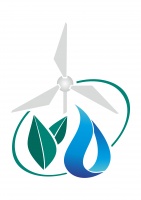Сравнение практик
| Название практики | Increasing water availability of pastures by constructing sardobas | Restoration of irrigation infrastructure in mountainous regions of Kyrgyzstan |
|---|---|---|
| Категория | Водные ресурсы | Водные ресурсы |
| Инструмент | Система повышения водообеспеченности | Восстановление водохозяйственной инфраструктуры |
| Сфера использования практики |
|
|
| Пригодность практики для адаптации к изменению климата | Умеренная | Умеренная |
| Кем реализована практика | Ministry of Nature Conservation of Turkmenistan |
Mountain Societies Development Support Programme Kyrgyzstan (MSDSP KG) on the initiative of Aga Khan Foundation |
| Где использована практика |
Страна: Туркменистан |
Страна: Кыргызстан Область: Ошская Район: Ноокатский |
| Специфика местности, где использована практика | 17,238 ha of barkhan (sand dune), takyr (dry-type playa) and solonchak (moist-type playa) sites of the Kara Kum Desert; deep ground water occurrence |
The northeastern part of Osh Region lies in the Tien Shan spurs (Fergana Range) with the Pamir-Altai Mountains in the south and west (Turkestan, Alai, Trans-Alai (Lenin Peak) Ridges. The climate in the region is sharp continental. The Kyzyl-Suu, Ak-Buura and Kara Darya are the largest rivers in the area used for irrigation. |
| Когда использована практика |
Дата начала: 01.01.2012 Дата окончания: 31.12.2016 |
Дата начала: 01.01.2013 Дата окончания: 31.12.2016 |
| Проблема, которая решается применением практики | Desertification and decreased productivity of desert pastures due to over-grazing around existing cattle watering sites |
Conflicts due to disputes over water resources and pastures |
| Примененные в практике инструменты | Technology of building sardobas (stone-dome covered water collection and storage reservoirs) to enhance pasture water supply |
Repair works to restore irrigation networks and infrastructure |
| Описание практики и ее результаты | Main actions:
Actions:
Results:
|
Disputes over water resources and pastures can lead to conflicts, in particular among the communities living in border zones in the Fergana Valley. Every year, this urgent issue gains even more relevance as - according to expert forecasts – by 2020 Kyrgyzstan’s population may reach 7 mln 70% of which will live in rural communities. Actions: The project to rehabilitate irrigation canals aimed to improve access to water resources and pastures for local residents. The project also promoted introduction of equal-right practices in the sphere of water resources and pastures management among local population. All project actions targeted the improvement of living conditions of local residents and decreasing tensions. Results: On June 8, 2016, Aga Khan Foundation (AKF) and Aga Khan Development Network (AKDN) held the ceremonial opening of 5 repaired irrigation canals in Nookat District of Osh Region. Repair works to rehabilitate the irrigation canals were co-funded by Nookat District Water Management Administration, ajyl aimaks (Kyrg. rural local governance bodies) and local residents themselves. Financial and economic:
Environmental: The condition of over 4,000 ha (irrigated land) improved. Technical results: The total length of all repaired irrigation canals exceeded 10,900 meters. Social results:
|
| Какие уроки и рекомендации можно извлечь из практики | Lessons learnt: Construction of sardobas in takyr areas allows enhancing pasture water supply, thus, leading to the restoration of over-grazed pastures. Recommendations: The practice requires long-term planning and an integrated response with the early-on engagement of desertification experts (designing a set of measures to protect takyrs from sand drifts), state agencies (technical assistance) and pasture users (observance of pasture rotation schemes, prevention of takyrs from contamination and pollution). |
Lessons learnt: Repair and restoration of irrigation infrastructure facilitated the improvement of living conditions among local population, decreased tensions and disputes associated with water and pasture use in border zones of the Fergana Valley, and enhanced farmer welfare. Recommendations: The practice yielded positive outcomes and is recommended for further scaling-up to improve the welfare and ensure sustainable development of mountain communities in border zones. |
| Источник практики | Traditional tools transferred from generation to generation that proved their efficiency in modern conditions |
Foreign tools (transfer of foreign experience) |
| Готовность практики к внедрению |
1. Затраты на внедрение: Низкие 2. Примерная стоимость капиталовложений на 1 га: $1,000-5,000 3. Затраты на поддержание и эксплуатацию: Низкие 4. Экспертная поддержка: Требуется на стадии внедрения |
1. Затраты на внедрение: Высокие 2. Примерная стоимость капиталовложений на 1 га: 3. Затраты на поддержание и эксплуатацию: Высокие 4. Экспертная поддержка: Не требуется |
| Краткая информация о проекте | Project title: Responding to climate change risks for dekhan farming system of Turkmenistan on national and local levels. Project duration: 2012-2016. Project goal and objectives: build the adaptation capacity to respond to climate change impacts, including variability on local and national levels. Project beneficiaries: Bori Settlement (over 1,100 people) and Bo-Kurdak Settlement (about 4,500 people). Project implementer: Ministry of Nature Conservation and UNDP |
Project title: Improving infrastructure and building capacity of relevant local institutes on effective management of water and pasture resources. Project duration: 2013-2016. Project goal and objectives: enhance welfare and ensure sustainable development of mountain communities, prevent conflicts, facilitate stability and security of using natural resources in border zones. Scale of implementation and project beneficiaries: populations of Nookat and Aravan Districts, town of Kyzyl-Kiya. Project implementer: Mountain Societies Development Support Programme Kyrgyzstan (MSDSP KG). |
| Источник финансирования практики | Government of Turkmenistan, Adaptation Facility | Aga Khan Foundation and the UK Embassy in Kyrgyzstan |
| Источники информации о практике | Mountain Partnership Member News (www.ekois.net) |
|
| Контактные данные лица, заполнившего форму | SIC ICWC |
SIC ICWC |
| Дата заполнения формы | 04.04.2018 | 18.05.2018 |




